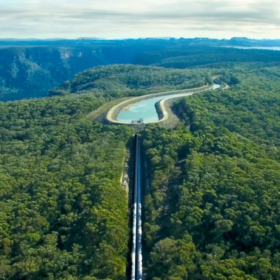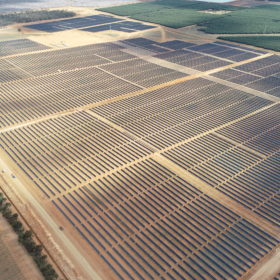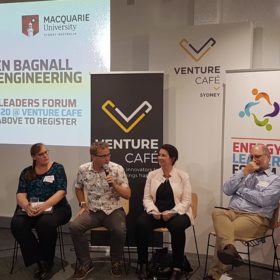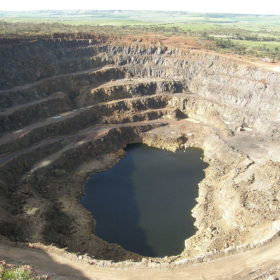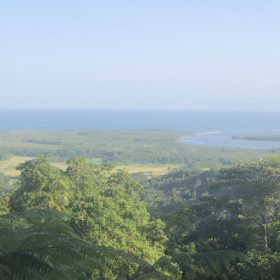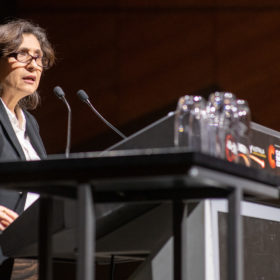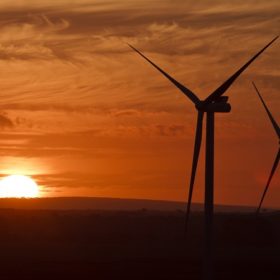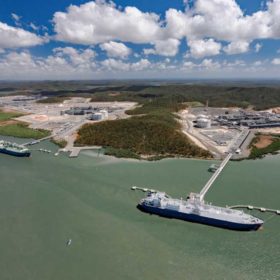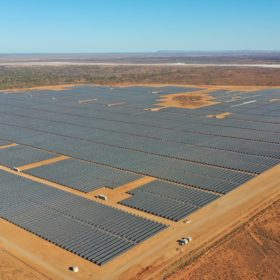The 16 GW imperative: Large-scale solar conversation moves into storage
“We need 16 GW of storage in the NEM to complement the renewable generation coming in,” said former Prime Minister Malcolm Turnbull at a renewable energy conference this week. And in one sense, that’s all you need to know…
45 renewable generators affected by West Murray connection woes
Many more renewable generators than originally thought are in a holding pattern as a result of oscillation problems in the weak-grid, high-resource area known as the West Murray. State Governments, AEMO and the renewables industry have hunkered down to find solutions that will also find application elsewhere in the grid as connection fever mounts.
Blockchain, butchers’ paper and US$100 trillion: Energy Leaders Forum revs up net-zero by 2050
The debate now stewing in the Australian Parliament around the viability and cost of setting a target of net-zero emissions by 2050 is again proving a case of too little vision applied too late. A new forum casts all participants as “leaders” and as it seeks to accelerate emissions reduction opportunities today.
AGL, Hillgrove Resources scrap 250 MW pumped hydro plans
Australia’s biggest power producer AGL and copper miner Hillgrove Resources have agreed to abandon the ambitious pumped hydro project at an old mine pit in South Australia. No longer bound by the project restriction, the owner intends to step up mining and drilling activities at the site.
UQ: A quantum dot solar cell with 16.6% efficiency
Scientists at Australia’s University of Queensland have set a new world record for a quantum dot solar cell. The group fabricated a 0.1cm² device from perovskite and measured power conversion efficiency at 16.6%. The record has been verified by the United States National Renewable Energy Laboratory.
Daintree solar to hydrogen microgrid closing on reality
An Australian-first solar to hydrogen-based microgrid for the World Heritage Protected Daintree Rainforest is another step closer to reality this week after Federal Leichhardt MP Warren Entsch revealed the feasibility study funded by the Federal Government last year is “on track”.
Victoria decides to go it alone on transmission to unlock more large-scale renewables and batteries
The Victorian government has decided to break away from national electricity rules and introduce legislation that will fast-track priority projects like grid-scale batteries and transmission upgrades and make room for more large-scale solar and wind on the grid. The announced reforms have prompted a flurry of reactions.
SEC rallies industry to prevent a sunset on opportunities in Australia’s renewable energy market
Over the past week renewable energy developers and major investors have told the Smart Energy Council that, “They’re done. The sovereign risk in Australia is too great,” says the industry body’s Government Relations Manager, Wayne Smith. With prospects, employment and energy prices in jeopardy, the SEC vows to rattle the corridors of power for a bankable plan.
5 perspectives on electrification of Curtis Island
The economics of energy supply are subject to a host of variable factors — including steady reductions over time in the costs of solar, wind and battery technology. Last week Rystad Energy published analysis of the proposed electrification of Curtis Island LNG plants and government assertions that such an energy swap would release substantial gas supplies for domestic use, lower gas prices and reduce carbon emissions…
5 things to watch in Australian solar sector in 2020
Despite a massive drop in renewable energy investment seen last year, 2020 promises to bring both good and bad news for the Australian solar sector. While network conditions will continue to deteriorate, the low-carbon policy will become more supportive but also more chaotic.
